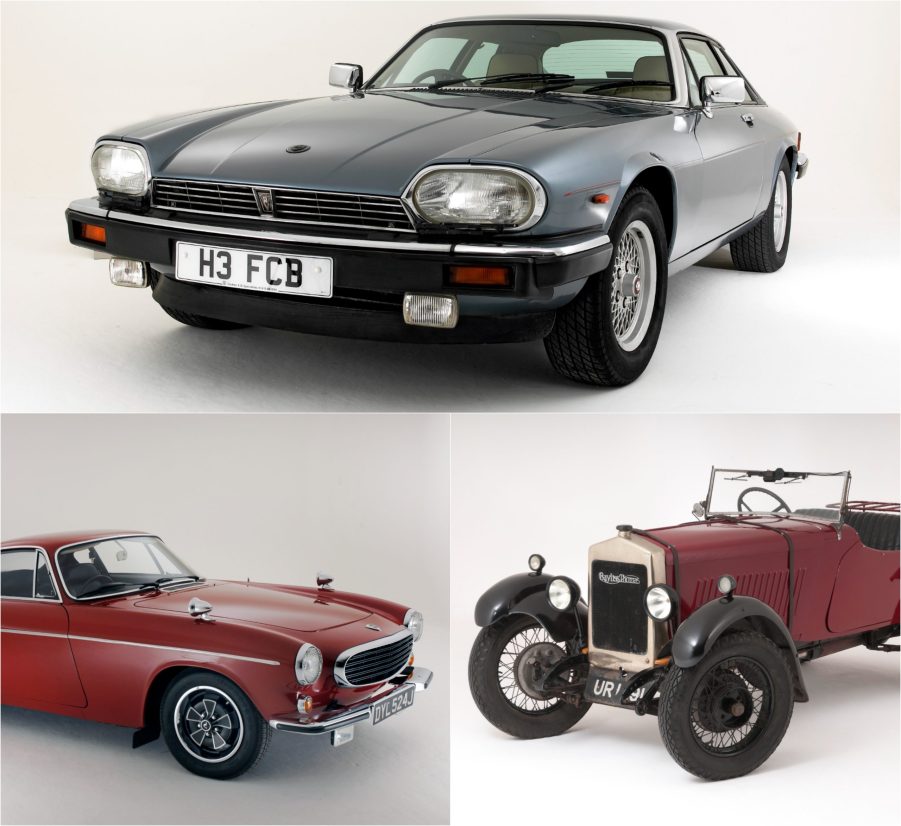
Do You Know the Difference Between Classic, Antique, and Vintage Cars?
You’ll often hear the terms classic car, vintage car, or antique car interchanged, but there are differences. All antique cars are classic, but not every classic car is an antique. But the definitions of each all depend on who you’re asking, from car collectors to classic car insurance providers. So let’s dive into the differences between a vintage car, an antique car, and a classic car.

What is a classic car?
Most people point to any car that’s relatively old and say, “yep, that’s a classic.” But if you say that in front of the Classic Car Club of America, you’d likely be stabbed. According to them, only certain cars from 1915 to 1948 qualify as “Full Classics,” making it a highly exclusive club. However, the Antique Automobiles Club of America determines that any car over the age of 25 is a classic.
But the widely excepted rule is that cars from 1990 and earlier are considered classics. This brings into question whether cars from 1995, which fall under the AACA’s guidelines, are actually classics. Perhaps some people aren’t ready to accept the fact that they’re getting old. And the cars they once daily drove are turning into classics.
Depending on who you ask, cars like the 1996 Dodge Caravan, which won MotorTrend’s Car of the Year, will become a classic next year. But if you follow the typical standard, then cars from the 90s aren’t quite classic enough yet.
What is an antique car?

An antique car goes one step further than a classic car, and the rules are a bit more clear. An antique car is anything manufactured from 1975 or earlier according to American Car Collectors. Essentially, it’s anything older than 45 years old, which makes 1976 the cutoff year (for now).
Two things interest me about this particular time frame. For starters, 1975 is smack in the middle of the fuel crisis, when compacts like the first generation Honda Civic CVCC were gaining traction and muscle cars were dying out. Secondly, if you’re like me, then you feel as if antique things are older than vintage things. So the question remains: what makes a car a vintage car?
What is a vintage car?

Unlike classics and antiques, it’s agreed upon that vintage cars are of a certain period. Anything manufactured between 1919 and 1930 (again, according to American Car Collectors). What’s somewhat odd about this is that the first Ford Model T rolled off the production line in 1908, but wouldn’t quantify as an antique if you follow this certain standard.
But all these agreed-upon standards are chucked out the window in terms of classic car insurance. For example, a vehicle that’s 10 to 24 years old and is of “historical interest” is a classic in the eyes of State Farm. But once it turns 25, it’s an antique. Geico says any car made after 1995 is a classic. Nationwide only considers cars that are between 20 and 40 years old as classics. It’s a hot mess of data provided by CarInsurance.com, and goes to show how flimsy some of these standards are.
Yes, as much as people want to categorieze, it’s just impossible to. Someday soon, awide eyed child will look at something from the early 2000s and say “look at that classic.” Grey hairs will instantly grow on your head, and you’ll realize that there’s no great way to determine what’s classic, antique, or vintage. After all, beauty is in the eye of the beholder, and time is a cruel mistress.


